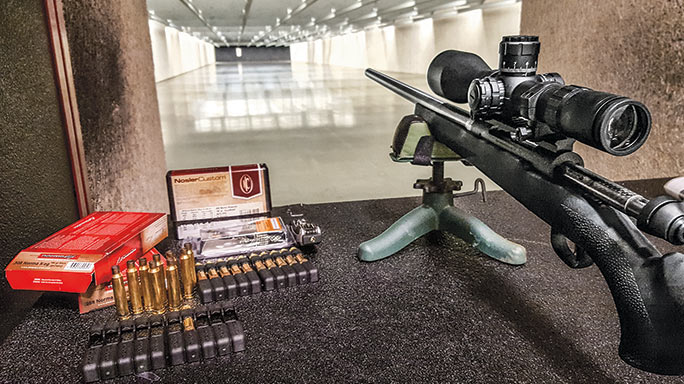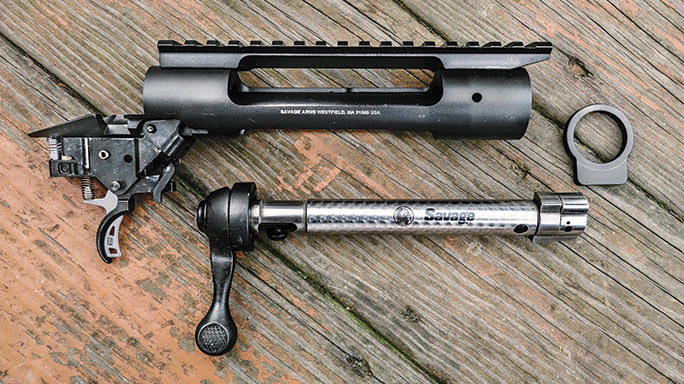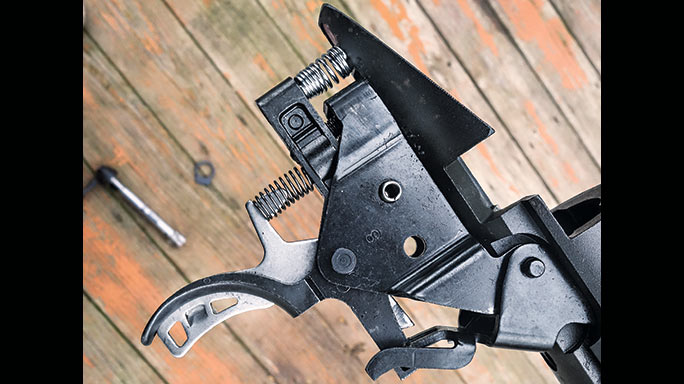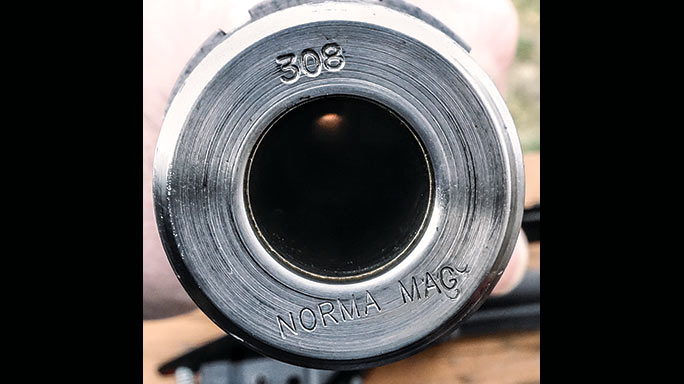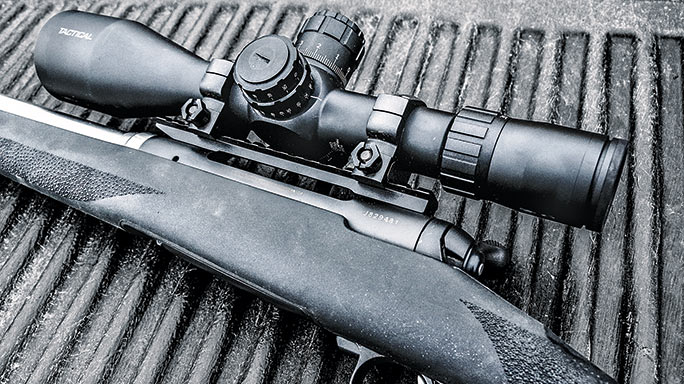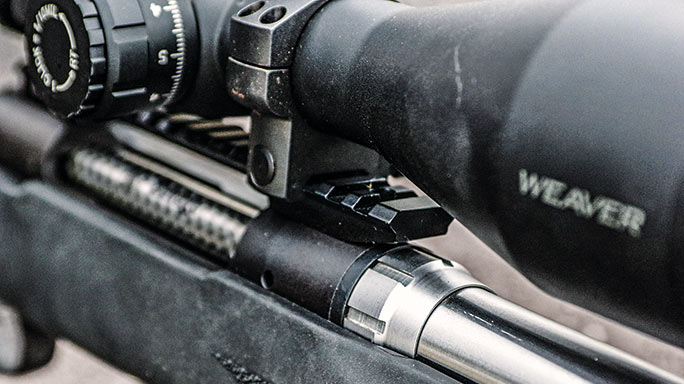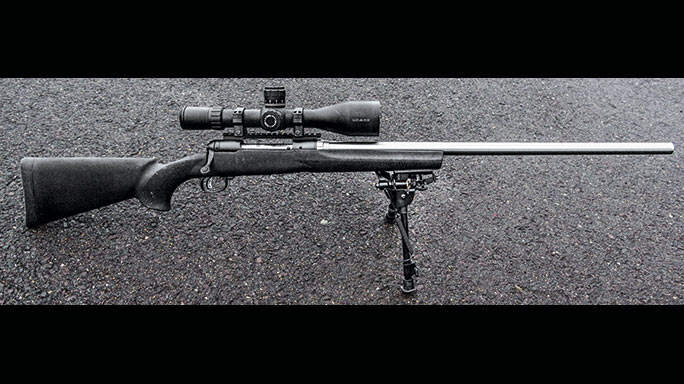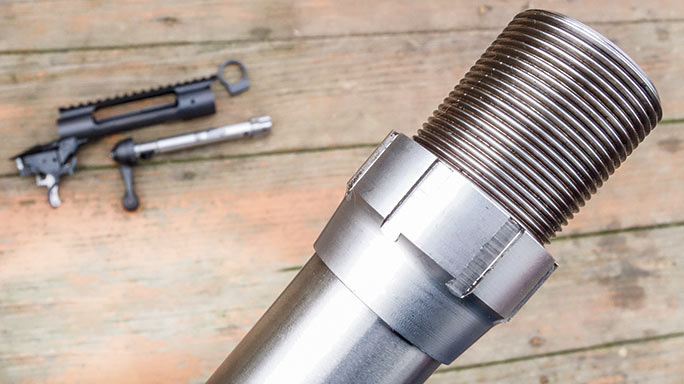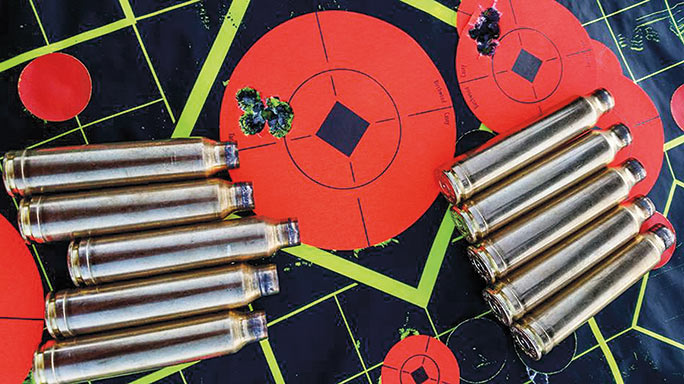Chances are, Savage Arms builds a rifle just right for you. If not, you can just build it yourself, no lathe required.
While the technical skill and artistry it takes to build the world’s finest firearms is probably impossible to sell in a do-it-yourself kit, Savage Arms’ original Model 110 design from 1958, now used on numerous Savage Arms centerfire rifles like the Model 10, Model 111 or Model 116, comes close.
- RELATED STORY: 7 Must-Have Accessories For Sniper Rifles
This simple, cost-effective design—especially the barrel attachment—has served Savage Arms well in helping create rifles known for their reliability, accuracy and affordable performance. In fact, its design is so simple that it has led to a robust aftermarket of parts that just about any methodical Savage rifle owner can use to build, repair or modify their guns without the need for a lathe.
Advertisement — Continue Reading Below
With a modest budget, a few simple tools, a pragmatic mind and enough workbench space, a Savage rifle owner today can transform his or her .204 Ruger coyote gun into a .308 and then into an elk-thumping .338 Federal. Long-action cartridge fans can turn their zest for shoulder-thumping power up just as easily. Gun owners can easily swap out bolt faces, barrels, bolt handles, triggers and, of course, stocks.
How easy? I did it and I’ve had a harder time with some Ikea builds. My first Savage Arms-inspired rifle build was both educational and enjoyable. But let’s get one thing crystal clear first: As a gun writer, I have witnessed many master gunsmiths craft some of the world’s finest rifles.
As such, I have learned a few things, like what kind of skills it takes to handcraft a rifle from scratch—and that I don’t have them. But thanks to the superb manufacturing of companies like Savage Arms, E.R. Shaw and Hogue, rock-solid directions and top-quality tools, while I may not be able to create a rifle from a block of metal, I can certainly assemble one. And that is precisely what a do-it-yourself Savage Arms action-type rifle build is—a precise assembly of well-machined, superbly engineered parts.
Advertisement — Continue Reading Below
The quest to build my first rifle began with the action. Thanks to the folks at the Savage Special Order Shop, especially Effie Sullivan, I was able to get a matte blue, right-handed Savage Arms 111FC Sporter magnum action that uses detachable magazines and a silky-smooth Savage Accu-Trigger.
Packaged for a .338 Win Mag, the long-action magnum designation meant it had a .540 bolt face, which is large enough to support calibers like the 7mm Rem Mag, .300 H&H Mag or even the .458 Win Mag. But what’s the fun in building a rifle I can find just about anywhere? If I was going to go through the trials and tribulations of learning how to assemble this kind of rifle, I figured I might as well make it interesting.
Now, I’d love to be the gun writer who was able to brag about how ballistically savvy I am in my choice of the .308 Norma Mag for this build. It might even impress a few saltier gun writing colleagues I know for me to spin you a technical yarn on how I knew things like the longer neck on the .308 Norma Mag case allowed me to have more bullet seating options over the newer .300 Win Mag, or how efficient the cartridge is with the powder it burns versus the performance you get. But the truth is far less macho.
Advertisement — Continue Reading Below
You see, while looking for parts to build my first rifle, I came across a great deal on an E.R. Shaw barrel chambered in .308 Norma Mag, so I bought it and instantly became a student and fan of this .30-caliber zinger.
The .308 Norma Mag sounds cool because it is. Like most speed-demon calibers both past and present, the .308 Norma Mag owes its DNA to the godfather, the .375 H&H Mag. After a more robust .300 Weatherby Mag designed by Roy Weatherby caught America’s full thump-it-farther-than-you-can-see-it attention in 1944, belted magnums really caught on.
In 1958, Winchester gave us the magnificent .338 Win Mag, and those wanting more juice took the big-block case and fed it a small-block bullet, necking it down to .30 caliber to give us the wildcat .30-338 Win Mag. Across the pond, Norma, a Swedish ammunition company, released its own flavor of .30-caliber magnum in 1959 with the .308 Norma Mag and the .358 Norma Mag.
Advertisement — Continue Reading Below
- RELATED STORY: Savage Arms’ 10 FCP-SR Rifle Is Law Enforcement-Ready
I think the .308 Norma Mag has a few advantages, with the biggest one being that it fits in a standard long action since the case length is 64mm. For comparison, America’s caliber, the .30-06, is metrically a 7.62x63mm. But the .308 Norma Mag has a few disadvantages, like finding factory-loaded ammunition and commercially-made rifles chambered for it. Come 1963, the more-popular-than-white-bread .300 Win Mag transformed the choice to shoot a .308 Norma Mag from genius to eclectic. Still, it is no sad wallflower. I began to study its ballistics more closely.
To find out more about the 308 Norma Mag, I reached out to some of the smartest bullet folks I know at Nosler who told me that, since the .308 Norma Mag is not a SAAMI-standardized cartridge, it’s delegated primarily to the realm of handloaders here in the U.S. According to one Nosler ballistician, the .308 Norma Mag is “well regarded in the hunting community. especially by those who prefer something other than the ubiquitous .300 Win Mag.”
He added that not only is the Swedish caliber a virtually even swap in the hunter’s realm as the .300 Win Mag, but it certainly has its own advantages for long-range shooters. “The longer neck on the .308 Norma Mag offers more seating depth options, and with the shorter case length consumes less case capacity when loaded to the same combined overall length.”
Advertisement — Continue Reading Below
Barrel Install
As I stated earlier, my own build’s choice in caliber was driven by the fact that I found quite the deal on the barrel. The E.R. Shaw tube I used for this is a 26-inch, varmint-contour, stainless barrel with a 1-in-10-inch-twist rate. I’d learn how well it shot later.
Adding a barrel to a Savage Arms action is pretty simple if you have the right tools and follow directions well. Of the few tools you’ll actually need, a lathe certainly isn’t one of them. You’ll need your gun parts, a Savage barrel action wrench, a barrel vise, an anti-seize compound, go and no-go gages, a torque wrench and a rubber mallet.
Advertisement — Continue Reading Below
I did my build the easy way in that my action came new and without a barrel attached to it, so all I had to do was thread the barrel into the action, headspace it and then set the barrel nut. In the course of writing this story, however, I assembled/disassembled the rifle to make sure I fully understood the process. I will say that practice makes perfect, though, as the second build shot much better than the first one.
Stock Options
With my barrel properly installed, all that was left for me to do was place the barreled action into a stock. For Savage rifles, the choices are almost limitless, but I chose a Hogue OverMolded pillar-bedded synthetic stock. Why pillar bedding? “Pillar bedding utilizes aluminum bosses embedded in the stock insert at the critical action-mounting bolt locations,” said Hogue’s Bill Crook. “These aluminum pillar beds guarantee an accurate, rock-solid action fit that will not shoot loose. Aluminum conforms to the rifle action, making it superior, even to a steel pillar bed.”
Advertisement — Continue Reading Below
Crook’s words proved true throughout my build. The fit and finish on the stock was perfect for the magnum rifle build. The grippy texture sits well with me, and the rifled action bolted up snugly. With the rifle married to its stock, I added a Picatinny rail to the top of the Savage 111FC action to allow me the most flexibility in my choice of optics. I used a Weaver Tactical 6-30x56mm scope.
Range Time
The first time I built the .308 Norma Mag rifle, I was fire-forming my brass from .338 Win Mag cases worked through a set of full-length resizing dies for the .308 Norma Mag until I was able to find head-stamped .308 Norma brass and factory-loaded ammunition from Nosler and Norma. Until then, the rifle worked fine, pushing 168-grain Hornady match bullets with H4381 powder to about 2,850 fps. I gently broke the new barrel in with a day at the range, cleaning the barrel between every shot for the whole 20 rounds I loaded.
Advertisement — Continue Reading Below
After that, I took the gun completely apart, cleaned it from bolt to muzzle and rebuilt it. I must have done a better job this time around because this rifle shot very well. I fed it factory-loaded Norma 180-grainers, factory-loaded Nosler 180-grainers, handloaded Hornady 168-grain match bullets as well as Sierra’s 168- and 190-grain Match BTHPs.
Maybe my rifle is sentimental, because it liked the 180-grain Norma factory loads the best, shooting well under 1 MOA, but everything I fed it shot much better than I ever thought a gun I assembled myself could. The credit for the rifle’s performance lies more in the quality manufacturing of today’s firearms parts than in my assembly skills, that’s for sure.
If you ever wanted to build your own centerfire rifle but don’t have a lathe, I recommend going the Savage Arms route. In fact, one interesting way to get started might be to canvass your local gun shop and find a used and even abused Savage rifle you can proudly restore and improve with a new barrel, trigger, stock and really just about anything else you are motivated to replace. You certainly don’t need to go exotic with your caliber choice like I did, but you can, and if you don’t like it, you can always change it. After all, even an everyday .270 Win becomes extraordinary when you know you built it with your own hands.
For More Information
- E.R. Shaw: ershawbarrels.com; 412-221-3636
- Hogue: hogueinc.com; 800-438-4747
- Savage Arms: savagearms.com; 800-370-0708
- Weaver: weaveroptics.com; 800-379-1732
Specifications
- Caliber: .308 Norma Mag
- Barrel: 26 inches
- OA Length: 48 inches
- Weight: 9.2 pounds (empty)
- Stock: Hogue synthetic
- Sights: None
- Action: Bolt
- Finish: Matte black, stainless
- Capacity: 3+1
- MSRP: N/A
